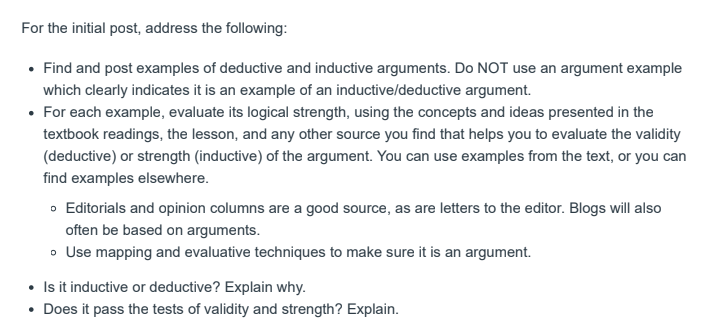
Initial Post Instructions
For the initial post, address the following:
- Find and post examples of deductive and inductive arguments.
- For each example, evaluate its logical strength, using the concepts and ideas presented in the textbook readings, the lesson, and any other source you find that helps you to evaluate the validity (deductive) or strength (inductive) of the argument. You can use examples from the text, or you can find examples elsewhere.
- Editorials and opinion columns are a good source, as are letters to the editor. Blogs will also often be based on arguments.
- Use mapping and evaluative techniques to make sure it is an argument.
- Is it inductive or deductive? Explain why.
- Does it pass the tests of validity and strength? Explain.
ANSWER:
There are two types of reasoning, inductive and deductive reasoning. Inductive reasoning is the kind of reasoning that takes specific information and draws wider generalization that is considered probable but may not be guaranteed 100% (Wanko, 2017). Thus, inductive reasoning may be described as making an informed or educated guess from the available data and/ or information. Even though inductive reasoning might sound right, it might not be right. An example of inductive reasoning is: John always leaves for work at 6.00 a.m. John is always on time. So, if John leaves for work at 6.00 a.m. today, he will be on time CONTINUE READING…
